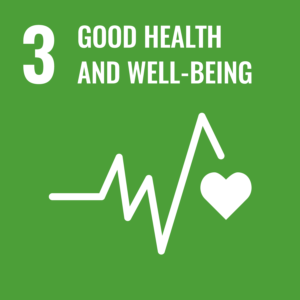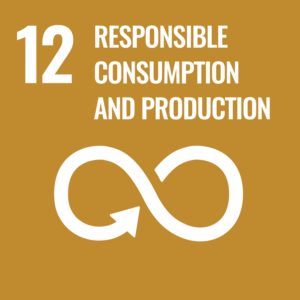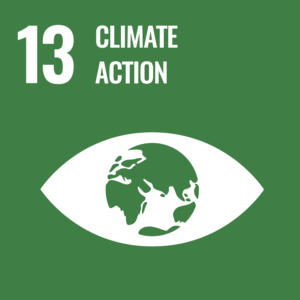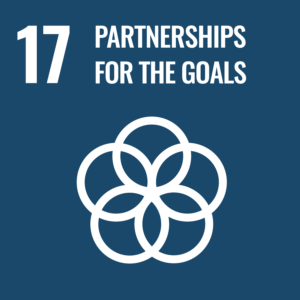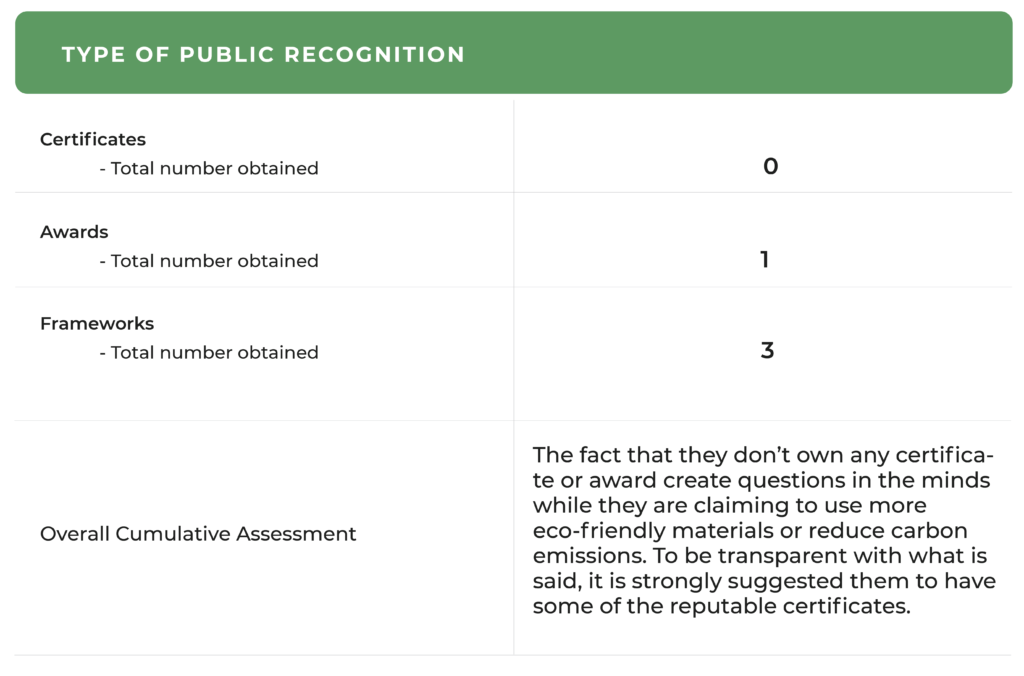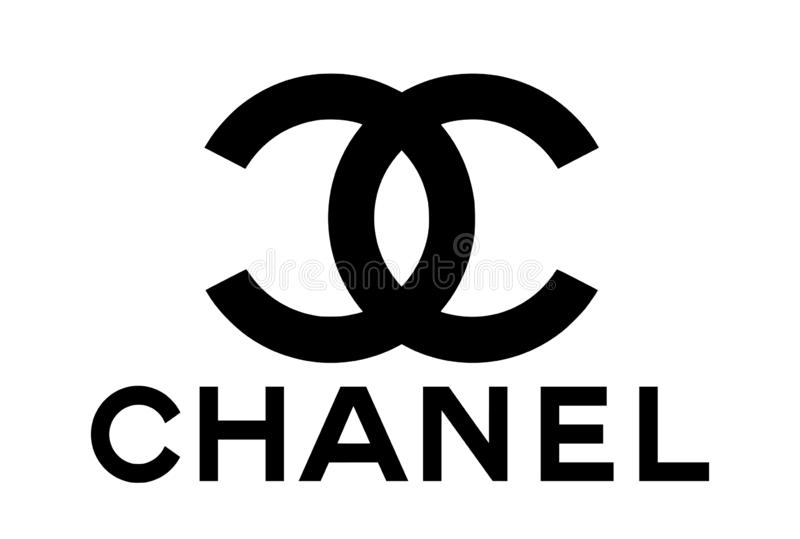
RATING

Negative
SECTOR
Luxury goods, perfumes and cosmetics
Chief Sustainability Officer
Kate Wylie
Contact Details:
LinkedIn
Stock Exchange and Ticker
Chanel is privately held
Website
Contact
T: 212-303-5978
E.mail:
Listing
- #61 World’s Best Employers (2022)
- #31 Best Employers for New Grads (2022)
- #294 Best Employers for Diversity (2022)
- #107 America’s Best Large Employers (2022)
- #139 World’s Top Female-Friendly Companies (2021)
Awards
- A score of 11-20% in the 2021 Fashion Transparency Index
- CDP, Climate Change 2022, Submitted but not scored
Revenue
$15.639 B
Market Capitalisation
$341.97 B
Employees
28.500
Content source
Chanel Sustainability Report
Evaluation of Chanel
A new range of “eco-responsible” skincare, fragrance, and cosmetics called N°1 de Chanel was introduced by Chanel. The brand has pledged to lessen its environmental effect by using carbon-reduced packaging and adhering to a “tight formulation code.” However, No. 1 de Chanel is not the beginning of Chanel’s sustainable journey. Via two pledges, Chanel hopes to fulfill its vision for a low-carbon future: cut through energy efficiency and accelerate through carbon credit offsets. The business contributed $25 million to a fund designed to help smallholder farmers in underdeveloped countries deal with and mitigate the effects of climate change. The Landscape Resilience Fund (LRF), established by sustainability experts South Pole and the Worldwide Fund for Nature, has Chanel as its lead investor.
The company lacks a certificate and is ineligible to win a recognized award. In terms of their materials, there is no proof that it has taken significant steps to lessen or eliminate dangerous chemicals, reduce textile waste in its supply chain. In spite of their items being worth thousands of euros on average, Chanel does not ensure that fair wages are paid along its supply chain, They still use non upcyclied fur and do not have a policy to lessen animal suffering or an overview of their animal products supply chain. Unfortunately it did not provide enough regulations to protect vendors and employees throughout the COVID-19 pandemic. Overall, they are a business that is moving toward sustainability but isn’t there yet.
Sustainability Scorecard
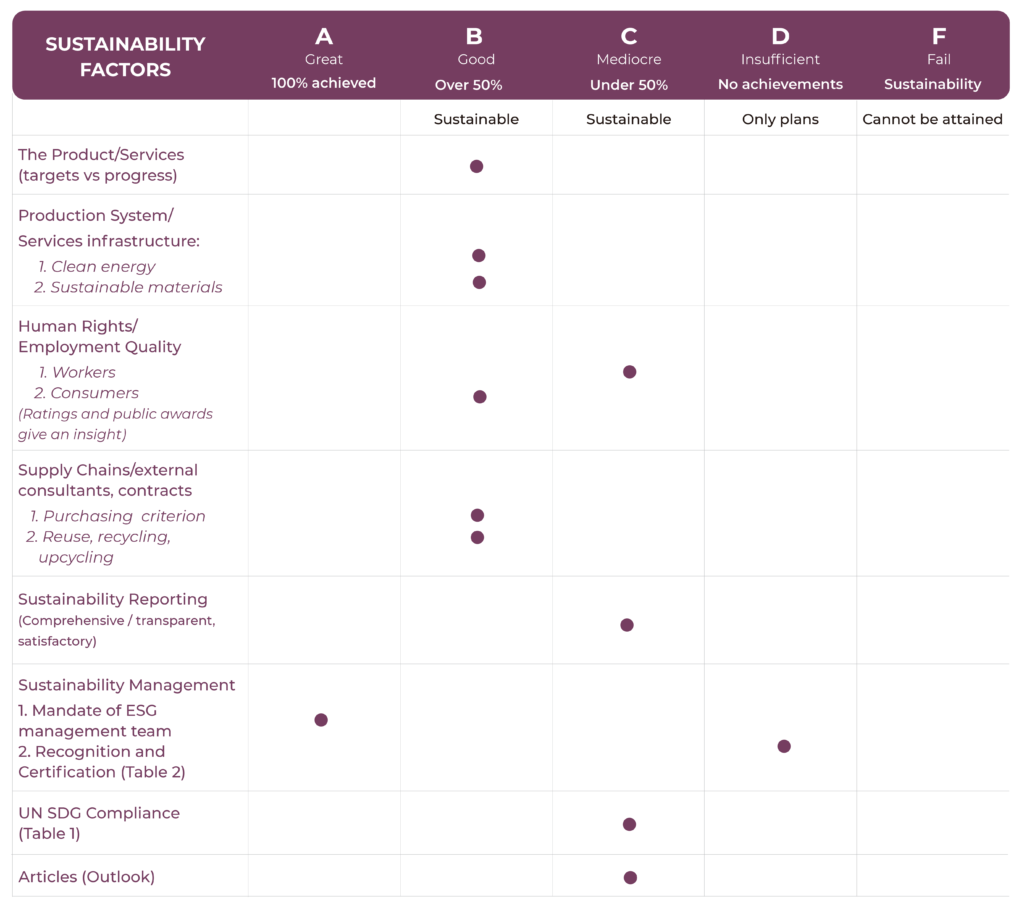
Chanel Company Activity
Chanel is a private company and a world leader in creating, developing, manufacturing and distributing luxury products. Founded by Gabrielle Chanel at the beginning of the last century, Chanel offers a broad range of high-end creations, including Ready-to-Wear, Leather Goods, Fashion Accessories, Eyewear, Fragrances, Makeup, Skincare, Jewellery, and Watches. Chanel is also renowned for its Haute Couture collections, presented twice yearly in Paris, and for having acquired a large number of specialized suppliers, collectively known as the Métiers d’Art.
Chanel is dedicated to ultimate luxury and to the highest level of craftsmanship. It is a brand whose core values remain historically grounded on exceptional creation. As such, Chanel promotes culture, art, creativity, and “savoir-faire” throughout the world, and invests significantly in people, R&D, sustainable development, and innovation. At the end of 2021, Chanel employed close to 28,500 people across the world
Chanel Sustainability Activity - As per company declarations
CHANEL Mission 1.5° is their climate action plan. It is focused on transforming the business in line with the ambitions of the Paris Agreement on climate change to limit the average global mean temperature increase to 1.5 degrees Celsius above preindustrial levels. Their commitments to both reducing emissions and accelerating climate adaptation are also in line with the outcomes of the Glasgow Climate Pact of 2021. They have set science-based targets to decrease their own carbon footprint (scope 1 and 2) by 50% by 2030 (equivalent to -66% per unit sold) and decrease emissions from their value chain (scope 3) by 40% per unit sold by 2030 (equivalent to -10% absolute). These targets are independently validated by the Science Based Targets initiative (SBTi) and use 2018 as a baseline year.
They also aim to shift to 100% renewable electricity in their own operations by 2025 and joined RE100 – a global initiative of influential businesses committed to achieving 100% renewable power – as part of this commitment. In recognition of the urgent global need to halt climate change, Chanel will be evolving its approach and setting net zero goals in the coming years in partnership with SBTi.
Certificate & Labels, Standards and Frameworks
- RE100
- Science-Based Target Initiative (SBTi)
- The Greenhouse Gas Protocol Corporate Standard
Chanel in the news: Press Reviews and Social Media
Chanel – Sustainability Rating – Good On You
Chanel has established a goal to cut greenhouse gas emissions from its own operations and supply chain, and it is on course to achieve that goal. However, there is no proof that it has taken significant steps to lessen or eliminate dangerous chemicals, reduce textile waste in its supply chain, ensure that living wages are paid in its supply chain, have a policy to lessen animal suffering, or can be proven that any animal product is traced back to its initial point of production. It does not provide enough regulations or protections to defend vendors and employees from COVID-19’s effects.
Chanel launches N°1, a new beauty range that embraces naturality and sustainability
According to ISO 16128 standards, the new N°1 de Chanel line from Chanel has up to 97% natural components and 76% camellia derivatives. The French brand is supporting environmentally friendly packaging and sustainable beauty. Glass makes up 80% of the goods in the collection. The lids on the whole product line are made of recyclable or biodegradable materials. Paper leaflets have been replaced with a QR code instead of cellophane. Collaboration between Chanel and Finnish start-up Sulapac produced this invention.
Chanel’s New ‘Eco’ Beauty Line Is Just Glam Greenwashing
In low-waste packaging, Chanel’s new collection contains cleansers, eye creams, serums, and cosmetics including foundation and lip and cheek balm. There are no leaflets or cellophane wrap, and 90% of the materials used to make the lids are biobased. The manufacturer claims that repurchasing their Revitalizing Cream twice cuts its CO2 emissions in half. Chanel has always been a fan of the white camellia. And this may be the point at which the sustainable aura of Chanel’s No. 1 begins to wane.
It is obvious advancement and evidence that the luxury conglomerate is serious about its climate plan, Chanel Mission 1.5°. As a flower “unlike any other,” the red camellia is described by Chanel as having “revitalizing qualities” and a “extraordinary vigor.” The upscale company even built a 40 acre open-sky laboratory just for the component in Gaujacq, France. As part of its commitment to protecting the environment, Chanel uses agroecology and agroforestry to protect regional biodiversity.
Every hour, 300 soccer fields’ worth of natural habitat are destroyed due to the world’s dependence on palm oil. The skincare line N°1 de Chanel makes progress in terms of cleaner packaging and lower emissions. Every action we do has an effect on the natural world since beauty doesn’t occur in a vacuum. According to designer Monika Dobos, there is a widespread notion that natural materials area somehow healthier for us and the environment. The palm oil controversy, however, shows that encouraging an excessive dependence on the natural environment isn’t always the best sustainable course of action when it comes to aesthetics.
Greenwashing hits trillion dollar corporate bond market
The trillion dollar corporate bond market has given rise to a unique type of greenwashing. Without making any genuine effort to meet climate goals, issuers receive something for nothing in the form of reduced interest rates and a better green reputation. The demand for these bonds frequently outpaces the supply by a factor of 2, 3, or even 5. Even more crucial to corporate finance is the $22 trillion corporate bond market. Currently, just 5% of corporate bonds are regarded as sustainable.
Chanel agreed to cut its emissions by 10% by 2030 as part of the Chanel commitment. These emissions, however, were already 21% below the starting point specified in the prospectus. A trillion dollar corporate bond market has been damaged by greenwashing. SLBs are a development of sustainability-related loans, which in 2021 will have a volume of more than $450 billion.Loans are frequently issued based on secret agreements, which makes them even more susceptible to greenwashing.
With bonds, sustainability objectives and financial penalties are included in the prospectus, allowing other parties to assess the contracts’ suitability. Two years ago, the upscale clothing company Chanel raised money using the brand-new financial instrument sustainability bonds. However, a closer examination paints a less favorable image of this and other corporate bonds, according to a Bloomberg News investigation.
Highlights from Chanel Sustainability Report
Achievements
- Almost 100% shift to renewable energy
- Switching to use of more eco-responsible fabrics
Weaknesses and Setbacks
- Only two targets
- Increase in scope 3 emissions
- Few certificates and awards gained
- Doesn’t cover most of the SDGs
Targets vs Progress Reported
| Target | Results reported |
|---|---|
| Decrease scope 1 and 2 emissions by 50% by 2030 (equivalent to 66% per unit sold) and value chain emissions by 40% (per unit sold) by 2030 | - Scope 1 and 2 emissions decreased by 33% compared with 2018 baseline - In 2021, scope 3 increased by 4% in absolute value versus 2018 |
| 100% renewable electricity by 2025 | By the end of 2021, they shifted to 92% renewable electricity, in comparison to 41% in 2018 |


